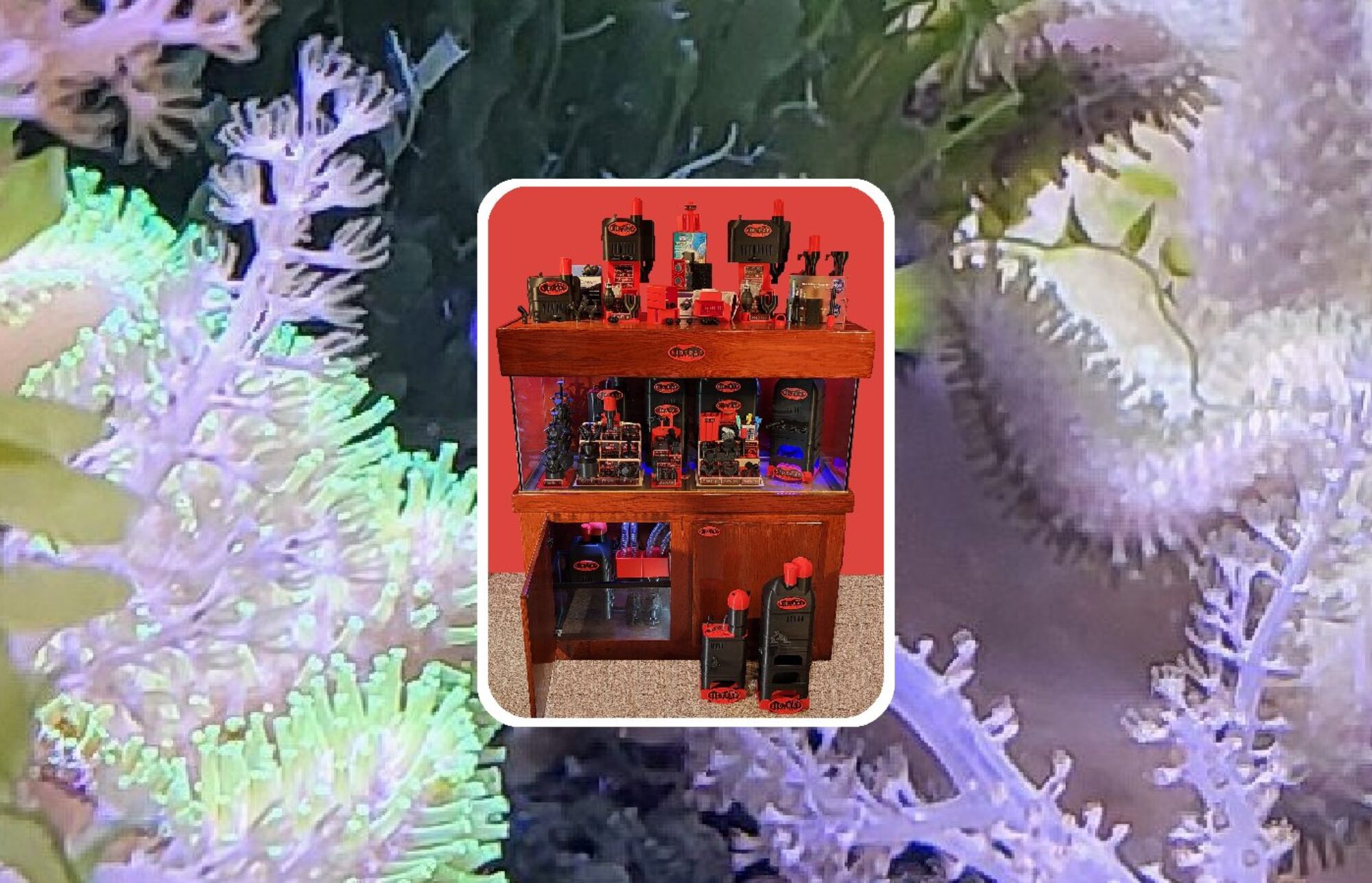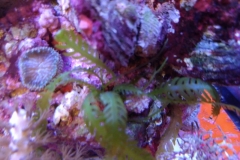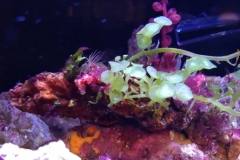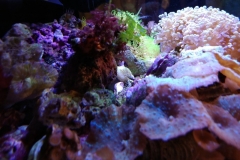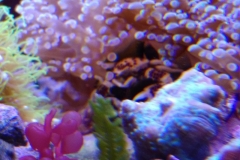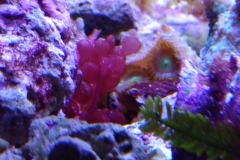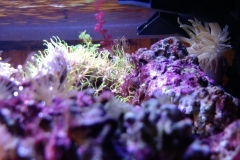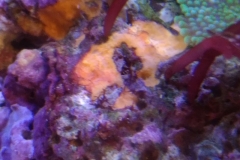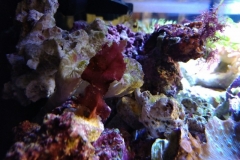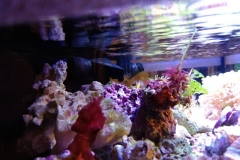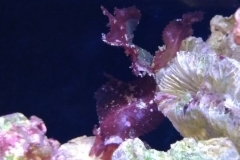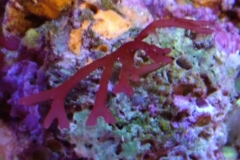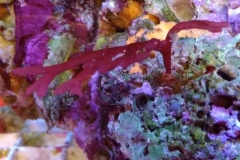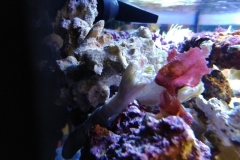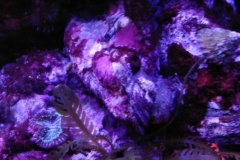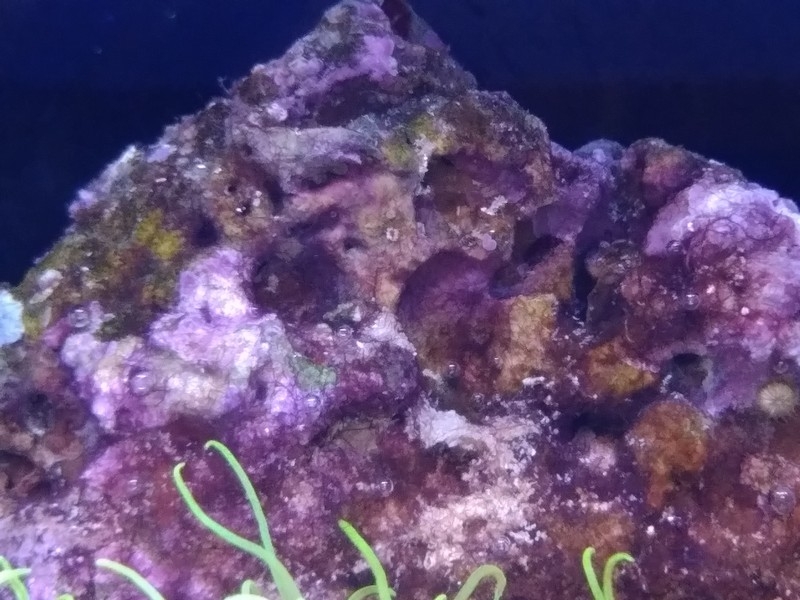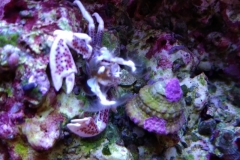Saltwater Fish in our Nano Aquarium…
The Lawnmower Blenny, Salarias fasciatus, also known as the Algae Blenny, Sailfin Blenny, Jeweled Blenny, Jeweled Rockskipper. These Blennies are a beneficial and active member in any aquarium. They are a brownish color with various spots making them excellent at camouflage. The Lawnmower Blenny is long and slender with one dorsal fin extending the length of the body. It exhibits a blunt head with eyes perched at the top with scattered blue dots speckling the face. What makes the Lawnmower an excellent fish for any tank is its beneficial habit of eating away unwanted algae. They require little care and little direct feeding as they can often survive on what is found naturally in the tank. The Lawnmower Blenny can reach a size of 5.5 inches, and should be kept in a tank no less than 30 gallons. They should be housed in a tank with plenty of live rock, and an abundance of algae growth. Often, the Lawnmower Blenny will sit at the bottom of the tank scraping rocks and the walls of the tank with its specialized teeth searching for algal deposits. And they should be fed a herbivore diet.It is recommended to regularly feed Nori as a marine algae supplement. If underfed it may pick at small Polyp stony corals. So this should be monitored. Because the the Lawnmower Blenny is a prolific jumper, it is highly advised to have a tightly sealed lid on your tank to prevent escape. Overall, there is a reason that the Lawnmower Blenny is one of our best sellers and one of the most abundant species in the aquarium trade. They are funny, hardy, incredibly easy to keep, active, and beneficial. They are also extremely peaceful, and should be housed with other peaceful tank mates. But not recommended to be housed with very sensitive species, like Pipefish or Seahorses. We highly recommend this fish for anyone looking for an easy to keep fish for a beginner tank. They will thrive in a temperature range of 72-78°F and a pH of 8.1-8.4.
no images were found
The Pygmy Angelfish is also called the Cherubfish, Cherub Angelfish, or Atlantic Pygmy Angelfish. It is a brilliant sapphire-blue with orange highlights to the face.
The Pygmy Angelfish requires a 55 gallon or larger tank with numerous hiding places and live rock for grazing on microalgae. It may nip at large-polyped stony corals and clam mantles.
The Pygmy Angelfish is an aggressive little angelfish, so it is best to never have more than one male per tank, since they may fight to the death. A breeding pair may be kept, and the Pygmy Angelfish has been bred in an aquarium with success.
The diet of the Pygmy Angelfish should include Spirulina, marine algae, high-quality angelfish preparations, mysis or frozen shrimp, and other meaty items. Feed three times daily.
Size ranges: Small; 1/2″ to 1″ Medium; 1″ to 2″ Large; 2″ to 3″
no images were found
The Mocha Ocellaris Clownfish, Amphiprion ocellaris, is a uniquely stunning captive-bred clownfish. With today’s successful breeding strategies, rarely are Black Ocellaris taken from the wild. The Mocha Ocellaris has been selectively bred for excellent quality. There is always some variation among individuals, but no more than slight orange on the face which will only darken with time as they mature. By the time they reach adulthood, the entire body will likely be black with slight orange tinges giving it its characteristic ‘mocha’ color. These fish are simple and beautiful. They require at least 25 gallons, eat omnivorous foods, and can even be bred in a home aquarium. They make excellent reef fish. The Mocha Ocellaris is just a beautiful fish that is already prepared to live in a captive environment and will be friendly with most tank partners.
no images were found
Saltwater Plants (Calupra) in our Nano Aquarium…
Saltwater Algae in our Nano Aquarium…
Saltwater Snails in our Nano Aquarium…
no images were found
